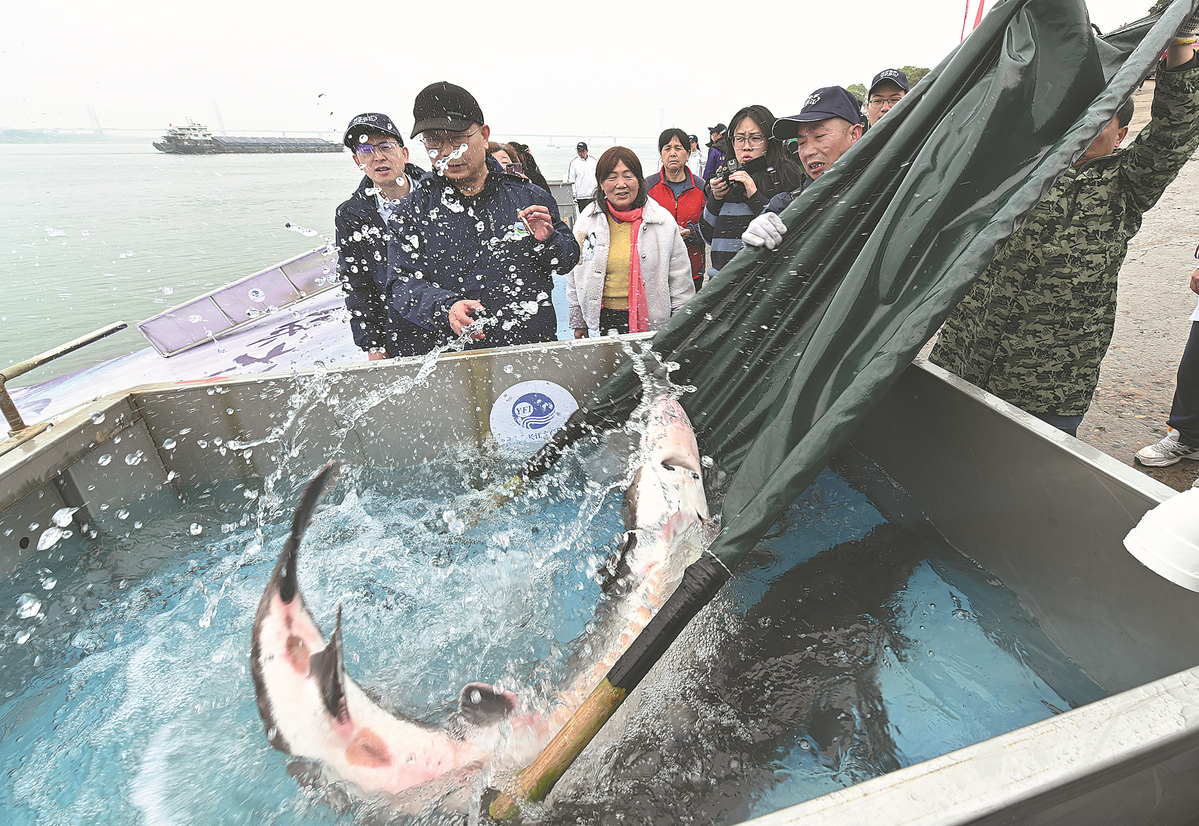Release program boosts Chinese sturgeon population

Editor's note: As protection of the planet's flora, fauna and resources becomes increasingly important, China Daily is publishing a series of stories to illustrate the country's commitment to safeguarding the natural world.

Artificially bred fish species are introduced to the Yangtze River to improve biodiversity. Li Lei reports from Beijing, with Liu Kun in Yichang, Hubei.
On a sunny day, hundreds of volunteers swarmed along the banks of a stretch of the Yangtze River in Yichang, Hubei province, in Central China.
A vessel owned by the China Fishery Law Enforcement, a bureau with the Ministry of Agriculture and Rural Affairs, which is overseeing a decadelong fishing ban imposed in 2021 to restore the river's biodiversity, docked nearby. The workers embarked on a gargantuan task: to release about 230,000 Chinese sturgeons into the waterway, the natural spawning ground of the fish.
One after another, young sturgeons were gently placed on a slide. They slid down five slides that stretched deep into the water, the nation's mother river.
The slides bore bold Chinese characters that spelled out the name of the event's organizer — the China Three Gorges Corp, which operates the dam of the same name some 40 kilometers upstream and also funds a research center to ensure that such releases are successful.
The Chinese sturgeon is known for the bony, armor-like scute covering its scales, and is often referred to as a "living fossil" due to its long evolutionary history and physical characteristics that have remained relatively unchanged over millions of years.
In China, the fish — whose life expectancy can reach 40 years — is a beloved national treasure on a par with the giant panda. Although it is classified as a critically endangered species, the fish used to travel long distances from the sea to breed in freshwater rivers, including the Yangtze. However, naturally spawned sturgeons have become increasingly rare, making the release of artificially bred fish important.
"I was excited to see the fish raised with my own hands released into the wild," said Jiang Wei, chief engineer at the Chinese Sturgeon Research Institute in Yichang.
























